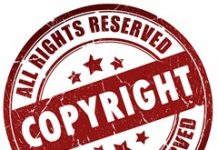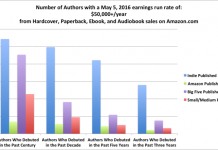 Another swipe at the Times article, this time from an author.
Another swipe at the Times article, this time from an author.
… The Big Six publishers are being very coy with these numbers. There’s a world of stuff hidden in that blended overhead and profit number. To begin with, they are burdening the e-book side of the equation with all of the overhead for the p-book side. Overhead costs should go down when you’re no longer operating traditional book factories.
I have to say I’m disappointed in The New York Times. I would have expected them to ask harder questions. The publishers gave a range of royalties on e-books with a ceiling of 25% so that the max return for an author on an e-book still fell below the max return on a hardcover. When a publisher presents the above numbers to an author, writers are likely to zero in on that $.65 difference between the p-book and the e-book royalties.
In actuality, a more reasonable number for that e-book royalty would be 30%, making it exactly the same $3.90 royalty shown for the hardcover.


































There is some offset for publishers as to the cost(s) between pBooks and eBooks. If they are printing less copies of a book the economy of scale is not as effective. So, if a publisher’s cost increase due to this either they have to increase the price of the book or apply the loss to the cost(s) of the eBook version.
eBooks have a bigger “buffer” between cost and selling price as with eBooks do not have paper, binding, storage, delivery, and returns associated with the book. Hence, some of the above can be applied to the cost of the eBook version and not affect the selling price.
And, until the eBook industry comes up with a common digital format, publishers have to adapt the digital coding for the pBook into the 4 or 5 different eBook digital formats. While it may sound simple to change one eBook format to another.
I am on my 45th eBook using my Sony 505. With 10% of the books, there are spaces where there shouldn’t be spaces, words split so that half is on one line, the balance on the next, the smallest size font is tooooo small, the largest size font is too large and too few words show on the reader. It is not just with my eBook that this happens. Friends with different makes tell me the same things are happening. As I understand it, either the care in formatting was less than desired or the publishers did not have enough different digital formats for our different types of eBooks.
So, going back to the start, both the publishers and the eBook designers will have to get together for eBook readers’ benefit.
It all comes down to ‘CHANGE” and the resistance to change by book lovers, pulbishers, eBook developers. Right now . . . there is some short changing going on . . . yet, for all of us, change is here and now.